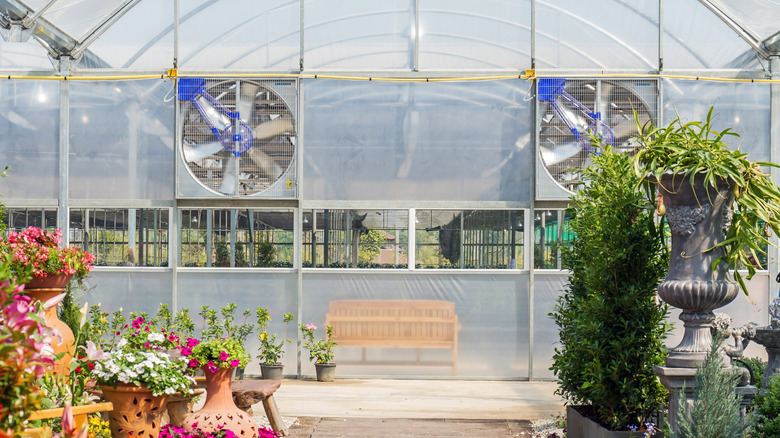The Overlooked Reason Your Greenhouse Plants Are Struggling
Many homeowners know about the advantages of growing plants in a greenhouse. But they may not realize that airflow plays a critical part in a healthy greenhouse. Without ventilation, the air inside the greenhouse becomes stale and stagnant. Your greenhouse is designed to extend the growing season by trapping warm air and creating ideal conditions for plant growth. However, without the exchange of warm, moist air with fresh outside air, your plants' ability to breathe is reduced. It creates the ideal conditions for moisture buildup and makes your greenhouse the perfect environment for fungal pathogens, such as botrytis (gray mold) and powdery mildew.
Lack of airflow over time leaves plants weak and underproductive. Without fresh air moving through the greenhouse, a pest outbreak can spread unchecked, creating even more stress on your plants. Greenhouses are growing systems that depend on controlled airflow, and ventilation is a fundamental tool for any size greenhouse. If your greenhouse plants are failing to thrive despite your best efforts, poor air movement may be the hidden culprit.
Proper ventilation is the solution for controlling the humidity and temperature inside a greenhouse — it helps reduce disease and prevent heat stress. Without fresh air, plants struggle to regulate their temperature through a process known as transpiration. Have you ever seen your tomato plant leaves in the morning with what looks like dew along the edges of the leaves? That is transpiration. The plant draws up water and nutrients through its roots, and excess water is seen on the edges of the leaves, which then evaporates. Whether growing vegetables, flowers, or herbs in greenhouse gardening, adequate ventilation is the key to a healthy harvest.
How to improve ventilation for healthier greenhouse plants
Fortunately, improving ventilation in your greenhouse doesn't have to be complicated or expensive. Ventilation systems come in both passive and active types. Passive systems use natural forces like wind and thermal buoyancy by way of roof vents and roll-up sides. Active ventilation uses fans to push or pull air through the greenhouse. Both types work to exchange moist, stale air for drier, cooler outside air, which helps to balance temperature and humidity levels. Even a small greenhouse will benefit from a well-placed roof vent or roll-up sides. For a larger structure, installing circulation fans often makes sense. As the fans provide air movement, they exhaust the heated air and create a slight vacuum, which draws in cooler air.
Small changes like opening vents at the right time of day, using roll-up sides, and installing box fans can make a big difference. If you are in the planning stages of building a backyard greenhouse, consider prevailing wind direction, shading, and the placement of fans or vents to create steady, even movement of air. If you are adding ventilation, like a fan, to an established greenhouse, whenever possible, the fans should be placed so they work with prevailing winds to make them more efficient.

